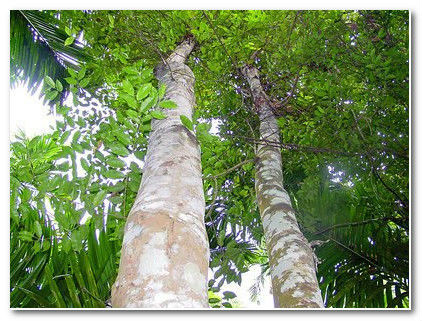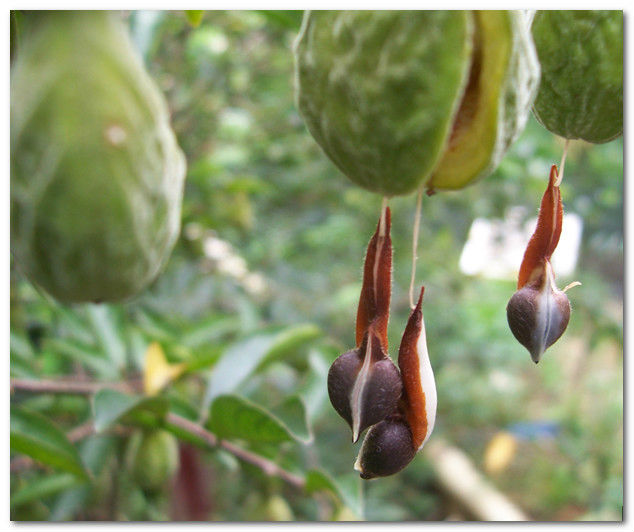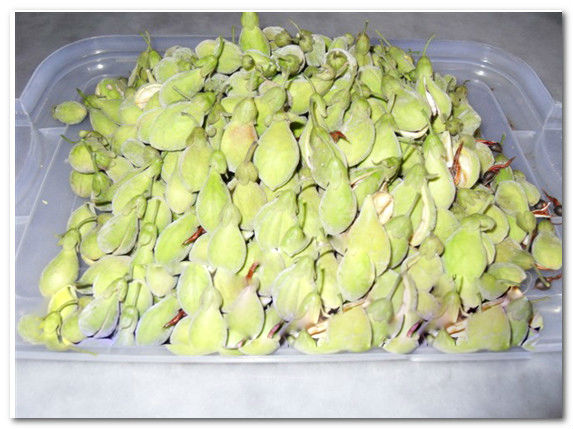1 / 2
Aquilaria malaccensis Seeds For Growing
Get Latest Price
Send Inquiry
| Model No. : | CX013 |
|---|---|
| Brand Name : | Herbshow |
Shanghai Herbshow Bio-Technology Co., Ltd.
You might also like
Product description
Chinese High Quality Aquilaria malaccensis Seeds For Growing Agarwood, also known as oud, oodh or agar, is a dark resinous heartwood that forms in Aquilaria and Gyrinops[1] trees (large evergreens native to southeast Asia) when they become infected with a type of mould. Prior to infection, the heartwood is relatively light and pale coloured; however, as the infection progresses, the tree produces a dark aromatic resin in response to the attack, which results in a very dense, dark, resin embedded heartwood. The resin embedded wood is commonly called gaharu, jinko, aloeswood, agarwood, or oud (not to be confused with 'Bakhoor') and is valued in many cultures for its distinctive fragrance, and thus is used for incense and perfumes. Uninfected Aqularia wood lacking the dark resin. One of the main reasons for the relative rarity and high cost of agarwood is the depletion of the wild resource.[2] Since 1995 Aquilaria malaccensis, the primary source, has been listed in Appendix II (potentially threatened species) by the Convention on International Trade in Endangered Species of Wild Fauna and Flora.[3] In 2004 all Aquilaria species were listed in Appendix II; however, a number of countries have outstanding reservations regarding that listing.[3]  History[edit] The odour of agarwood is complex and pleasing, with few or no similar natural analogues. As a result, agarwood and its essential oil gained great cultural and religious significance in ancient civilizations around the world, being mentioned throughout one of the world's oldest written texts – the Sanskrit Vedas from India. As early as the third century AD in ancient China, the chronicle Nan zhou yi wu zhi (Strange things from the South) written by Wa Zhen of the Eastern Wu Dynasty mentioned agarwood produced in the Rinan commandery, now Central Vietnam, and how people collected it in the mountains. Starting in 1580 after Nguyen Hoang took control over the central provinces of modern Vietnam, he encouraged trade with other countries, specifically China and Japan. Agarwood was exported in three varieties: Calambac (ky nam in Vietnamese), tram huong (very similar but slightly harder and slightly more abundant), and agarwood proper. A pound of Calambac bought in Hoi An for 15 taels could be sold in Nagasaki for 600 taels. The Nguyen Lords soon established a Royal Monopoly over the sale of Calambac. This monopoly helped fund the Nguyen state finances during the early years of the Nguyen rule.[4] Xuanzang's travelogues and the Harshacharita, written in seventh century AD in Northern India, mentions use of agarwood products such as 'Xasipat' (writing-material) and 'aloe-oil' in ancient Assam (Kamarupa). The tradition of making writing materials from its bark still exists in Assam.
History[edit] The odour of agarwood is complex and pleasing, with few or no similar natural analogues. As a result, agarwood and its essential oil gained great cultural and religious significance in ancient civilizations around the world, being mentioned throughout one of the world's oldest written texts – the Sanskrit Vedas from India. As early as the third century AD in ancient China, the chronicle Nan zhou yi wu zhi (Strange things from the South) written by Wa Zhen of the Eastern Wu Dynasty mentioned agarwood produced in the Rinan commandery, now Central Vietnam, and how people collected it in the mountains. Starting in 1580 after Nguyen Hoang took control over the central provinces of modern Vietnam, he encouraged trade with other countries, specifically China and Japan. Agarwood was exported in three varieties: Calambac (ky nam in Vietnamese), tram huong (very similar but slightly harder and slightly more abundant), and agarwood proper. A pound of Calambac bought in Hoi An for 15 taels could be sold in Nagasaki for 600 taels. The Nguyen Lords soon established a Royal Monopoly over the sale of Calambac. This monopoly helped fund the Nguyen state finances during the early years of the Nguyen rule.[4] Xuanzang's travelogues and the Harshacharita, written in seventh century AD in Northern India, mentions use of agarwood products such as 'Xasipat' (writing-material) and 'aloe-oil' in ancient Assam (Kamarupa). The tradition of making writing materials from its bark still exists in Assam. 




 Healthy life ,Herbshow with you
Healthy life ,Herbshow with you
Cellphone :+86 158 21025358 Skype :herbshow001
Address:No.1000,Changta Road ,Songjiang ,Shanghai ,China http://www.herbshow.en.alibaba.com/ http://www.herbshowbio.com/
 History[edit] The odour of agarwood is complex and pleasing, with few or no similar natural analogues. As a result, agarwood and its essential oil gained great cultural and religious significance in ancient civilizations around the world, being mentioned throughout one of the world's oldest written texts – the Sanskrit Vedas from India. As early as the third century AD in ancient China, the chronicle Nan zhou yi wu zhi (Strange things from the South) written by Wa Zhen of the Eastern Wu Dynasty mentioned agarwood produced in the Rinan commandery, now Central Vietnam, and how people collected it in the mountains. Starting in 1580 after Nguyen Hoang took control over the central provinces of modern Vietnam, he encouraged trade with other countries, specifically China and Japan. Agarwood was exported in three varieties: Calambac (ky nam in Vietnamese), tram huong (very similar but slightly harder and slightly more abundant), and agarwood proper. A pound of Calambac bought in Hoi An for 15 taels could be sold in Nagasaki for 600 taels. The Nguyen Lords soon established a Royal Monopoly over the sale of Calambac. This monopoly helped fund the Nguyen state finances during the early years of the Nguyen rule.[4] Xuanzang's travelogues and the Harshacharita, written in seventh century AD in Northern India, mentions use of agarwood products such as 'Xasipat' (writing-material) and 'aloe-oil' in ancient Assam (Kamarupa). The tradition of making writing materials from its bark still exists in Assam.
History[edit] The odour of agarwood is complex and pleasing, with few or no similar natural analogues. As a result, agarwood and its essential oil gained great cultural and religious significance in ancient civilizations around the world, being mentioned throughout one of the world's oldest written texts – the Sanskrit Vedas from India. As early as the third century AD in ancient China, the chronicle Nan zhou yi wu zhi (Strange things from the South) written by Wa Zhen of the Eastern Wu Dynasty mentioned agarwood produced in the Rinan commandery, now Central Vietnam, and how people collected it in the mountains. Starting in 1580 after Nguyen Hoang took control over the central provinces of modern Vietnam, he encouraged trade with other countries, specifically China and Japan. Agarwood was exported in three varieties: Calambac (ky nam in Vietnamese), tram huong (very similar but slightly harder and slightly more abundant), and agarwood proper. A pound of Calambac bought in Hoi An for 15 taels could be sold in Nagasaki for 600 taels. The Nguyen Lords soon established a Royal Monopoly over the sale of Calambac. This monopoly helped fund the Nguyen state finances during the early years of the Nguyen rule.[4] Xuanzang's travelogues and the Harshacharita, written in seventh century AD in Northern India, mentions use of agarwood products such as 'Xasipat' (writing-material) and 'aloe-oil' in ancient Assam (Kamarupa). The tradition of making writing materials from its bark still exists in Assam. 




 Healthy life ,Herbshow with you
Healthy life ,Herbshow with youCellphone :+86 158 21025358 Skype :herbshow001
Address:No.1000,Changta Road ,Songjiang ,Shanghai ,China http://www.herbshow.en.alibaba.com/ http://www.herbshowbio.com/
Send your inquiry to this supplier
Send Inquiry
















